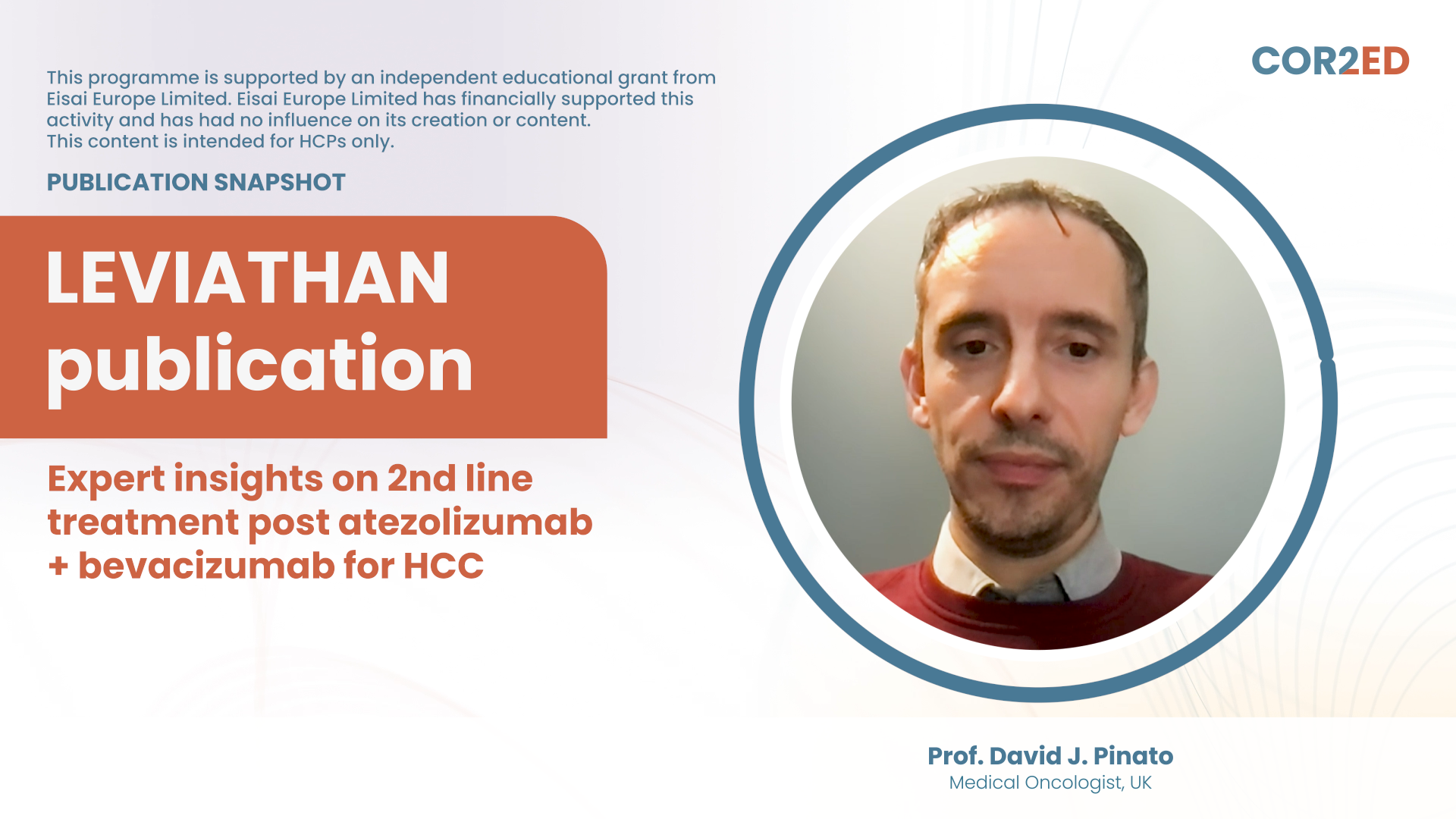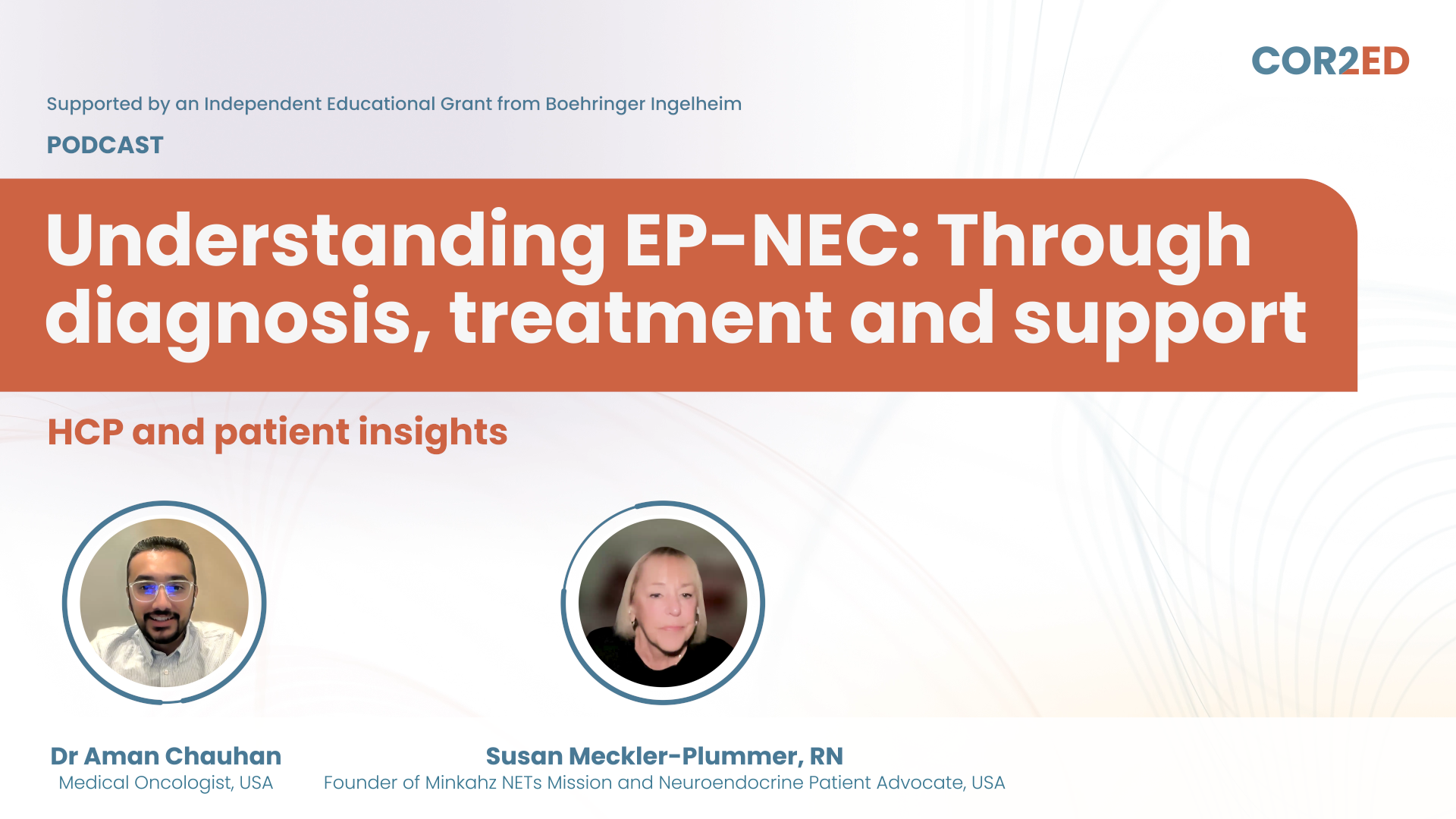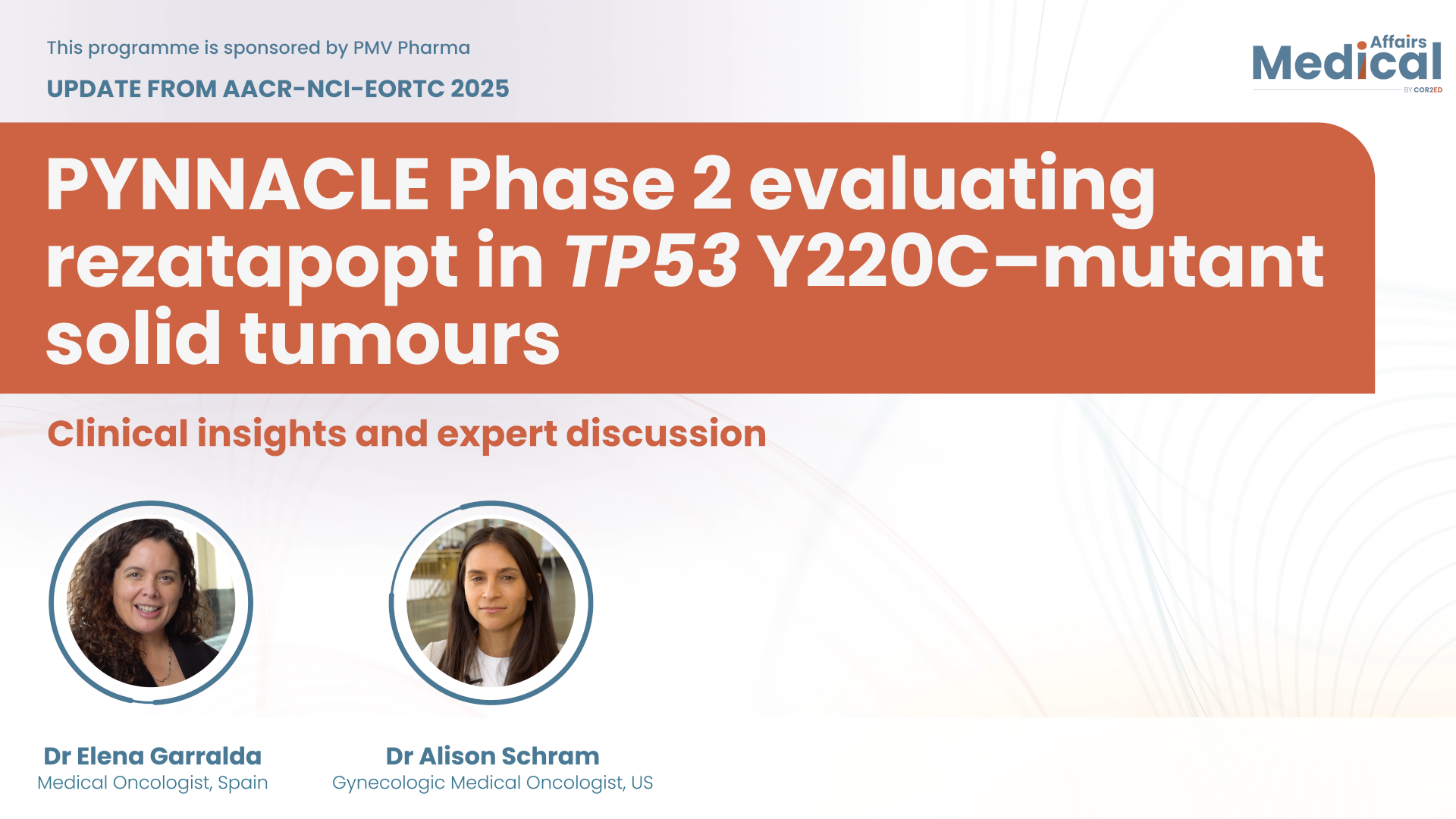Episode 3: Overview of efficacy and safety data of combination therapy with PARPi and NHAs, incorporating the latest data presented and the impact for the treatment of patients with mCRPC
Transcript
Welcome and thank you for listening to this podcast from COR2ED, independent medical education. In this episode, you will hear from internationally renowned experts Dr Tanya Dorff and Dr Neeraj Agarwal, when they discuss the latest data on PARP inhibitors in combination with novel hormonal agents and the impact of these for the treatment of patients with metastatic castration-resistant prostate cancer.
They discuss recent data from the PROpel, MAGNITUDE and TALAPRO-2 studies and debate whether PARP inhibitor plus an AR-targeted therapy should be used upfront for all patients with CRPC regardless of HRR status or if the combination should be used in a more select patient population.
This podcast is an initiative of COR2ED and developed by GU CONNECT, which is a group of international experts working in the field of GU oncology. The podcast is supported by an independent educational grant from AstraZeneca. The views expressed are the personal opinions of the experts, and they do not necessarily represent the views of the expert’s organisations, or the rest of the GU CONNECT group. For experts disclosures on any conflict of interest, please visit the COR2ED website. Now, with that being said, let's get started.
Tanya
Hello and welcome to the third podcast in our series covering PARP inhibitors for prostate cancer. Today, we're going to discuss the latest data on PARP inhibitors in combination with novel hormonal agents and the impact of this for the treatment of patients with mCRPC. I'm Dr Tanya Dorff, section chief for Genitourinary Cancers at the City of Hope. And I'm joined today by my colleague, Dr Neeraj Agarwal. Neeraj, would you mind introducing yourself?
Neeraj
Of course. Very happy to be here. My name is Neeraj Agarwal. I'm a Professor of Medicine and Director of Genitourinary Oncology Program at the Huntsman Cancer Institute, University of Utah in Salt Lake City.
Tanya
Well, I'm so pleased to be able to chat with you about this very important topic. Last year, we saw data from two large, randomised trials, PROpel and MAGNITUDE, which both investigated the combination of PARP inhibitors with novel hormonal agents. So why don't we start by reviewing those before we move into the really exciting new data that you presented this year at ASCO GU?
So, the PROpel study was for patients with first-line mCRPC and randomised all-comers without knowing their genomic status to abiraterone plus olaparib or abiraterone plus placebo. So, there was an overall benefit in the radiographic progression free survival endpoint regardless of genomic status. Of course, there was a greater benefit seen when they did look at the genomic alterations. And this was strongly positive with a very, very strong signal in those with BRCA mutations who we know tend to have poorer outcomes with standard of care. The trend for improved radiographic progression free survival held up even in those patients who did not have mutations in homologous recombination repair. So that was what was new about this, besides it being a combination study was the potential for patients to experience benefit based on synergy of this these classes of drugs rather than synthetic lethality with the PARP inhibitor in the setting of homologous recombination repair deficiency, which is how we've traditionally thought about these agents.
Now the MAGNITUDE study, which was presented at the same time presented a bit of a conundrum. So, in this study, the metastatic castrate resistant prostate cancer patients in the first line setting were first evaluated for genomic alterations, and then separated into two cohorts, those with a homologous recombination repair mutation and those without. Now, within each of those cohorts, they were randomised to abiraterone with or without niraparib. And as you know, that cohort without genomic alteration had to be closed early due to futility for a lack of benefit. While we did see a consistent signal in the BRCA altered population for a benefit in terms of the combination.
We saw no new safety signals when adding these two agents in combination. Although the dose of niraparib in MAGNITUDE did have to be reduced so that it could be combined safely. But in general, you know, the biggest added side effect that we see with a PARP inhibitor on top of a drug like abiraterone is anaemia, which is sort of a class effect in the PARP inhibitors. There's a little bit of GI toxicity as well but again, what we did not see was some new toxicity or some new degree or severity or frequency of toxicities. It was very consistent with what you would see with the agents alone. So that was reassuring.
And now we were, of course, waiting for overall survival data rather than just rPFS. So, we saw at ASCO GU 2023 the updated survival analysis from PROpel which did show an (numerical) improvement in overall survival by greater than seven months.
So, I'm curious what you thought about this. And then of course, we'd love to hear you summarise the data, which were the data from TALAPRO-2 that you presented at ASCO GU.
Neeraj
Of course, when we saw these results in the GU ASCO 22, actually it was quite intriguing to see two very similar trials having different results, which is, although this showed benefit in the HRR positive subsets, HRR negative patients did not seem to benefit with abiraterone and a niraparib combination, but they seemed to benefit with abiraterone plus olaparib combination.
And obviously I was intrigued by those data. But then we also know that the PARP inhibitors are different.
We also know that the dose of niraparib had to be decreased by 33% because of the toxicities experienced in combination with MAGNITUDE. But then there are different patient population, the way they were selected, different composition of HRR positive patients, there were differences in the number of patients with BRCA2, BRCA1 and so many different other HRR gene alterations.
So, of course, intriguing data and we were really hoping to have some hint or indication from TALAPRO-2 trial whether the combination of a PARP inhibitor and a novel hormonal therapy may be effective in HRR negative patients given preclinical rationale, which also exist there. So that provides a nice segway to the discussion of the TALAPRO-2 trial, which I had the honour of presenting in the GU ASCO 23.
So TALAPRO-2 trial, as we know, was a phase 3 trial in first line mCRPC setting. These patients could not have received any life prolonging therapy for the castration resistant state and patients were randomised to talazoparib plus enzalutamide versus enzalutamide plus placebo. Radiographic progression free survival per independent radiology assessment was the primary endpoint and we saw benefit in both homologous recombination repair altered patients, the patients who did not have those alterations who had unknown status by prospective tumour tissue testing, they seemed to benefit. We did a separate analysis looking for specifically in those patients who are HRR negative by prospective tumour tissue testing and there was a significant benefit as far as delaying of radiographic progression free survival.
So combined together, the results from the TALAPRO-2 trial are in sync with what we saw with PROpel trial, that patients seemed to benefit with the combination of enzalutamide plus talazoparib versus enzalutamide plus placebo, regardless of whether they had homologous recombination repair mutations are not. With the caveat that of course the magnitude of benefit is much higher in the HRR positive patients versus HRR negative patients.
Tanya
And that speaks to the importance of continuing to do genomic testing of our patients so that we kind of know what to counsel them about the relative benefits and risks. So speaking of risks, the dose of talazoparib had to be reduced for use in combination with enzalutamide. Can you speak to that? And to what sort of toxicity profile was seen in the TALAPRO-2 trial?
Neeraj
Again, as we saw, this is a class effect, anaemia dominated the toxicity. In fact, 46% patients developed grade 3/4 anaemia. And I'd like to bring this to our listeners attention, that 49% of patients actually came into the trial with grade one or two anaemia and the haemoglobin requirement, the lowest haemoglobin they could have to get into the trial was nine gram per deciliter. And really, we need one point decline in the haemoglobin to achieve a grade 3/4 toxicity. So we didn't really want to decrease the dose of talazoparib for grade one or two anaemia, because that would have basically required half of the patients to have dose reduction even before starting treatment. And I think that strategy worked very well. The onset of anaemia was 3.3 months. That was a median duration of onset of anaemia.
So overall, I think the message here is these patients are expected to develop anaemia and they need to be monitored closely in the first three, four months.
The other side effects that seem to affect quality of life, such as anorexia, fatigue, nausea and vomiting. If we look at those side effects, the grade three or four side effects range between 1 to 4% patients. So overall, I think this is an acceptable toxicity profile. We didn't see any new safety signal with the combination, and I look forward to regulatory approval of this combination.
Tanya
Yes. So, it seems like the toxicity profile when we're using the PARP inhibitor in combination with either abiraterone or enzalutamide looks really similar to when we use it on its own. And I guess that's part of the discussion we have as we think about expanding usage of these agents to a broader population, those without a BRCA 1 or 2 mutation, for instance.
What do you think about using these combinations in all comers?
Neeraj
As we saw the level of benefit, that is in BRCA1 versus BRCA2 versus HRR positive cohort versus HRR negative and when we all are making decisions in the clinic, we look at the magnitude of benefit and the side effects and we make a decision together with the patients.
So, of course we have to wait for the regulatory approval of these data and once these are approved, I look at discussing these benefit versus toxicities with my patients and depending upon what other options are available. I would like to be offering these options.
Definitely I will put them on the table and it will be informed decision making by my patients.
Tanya
So, in the PROpel trial, up to a quarter of patients had docetaxel in the upfront metastatic hormone sensitive setting. But of course, this was intended to be first line mCRPC so patients had not been exposed to prior abiraterone or enzalutamidea. What do you think about patients who present to your clinic who have already been exposed to abiraterone or enzalutamide for metastatic hormone sensitive disease? Can we offer these combinations of the novel hormonal agent with the PARP inhibitor to those patients?
Neeraj
This is great question. So, the most important line of decision making for me is, is the disease progressing on a novel hormonal therapy such as enzalutamide, apalutamide, darolutamide or abiraterone or resistant to novel hormone therapy?
So, in those patients the data are not there, I think we will have to generate the data. But only 5 to 10% of patients develop de novo metastatic hormone sensitive prostate cancer as a presentation of prostate cancer. 90% of patients ultimately develop mCRPC from a localised prostate cancer and then there is a whole continuum of disease. They go from localised prostate cancer to receiving radiation therapy and receiving androgen deprivation therapy for, say, six months to 18 months. And we know many of these patients never recover their testosterone before developing mCRPC.
Then we saw the data from STAMPEDE trial. Many of my patients are now receiving two years of abiraterone based on the STAMPEDE trial, and they stop abiraterone after that and their disease slowly progressed. If they if they were to have disease progression down the line and they are not really resistant to a novel hormonal therapy. Then many of my patients with radiation therapy or surgery develop hormone sensitive biochemical recurrence and they receive intermittent androgen deprivation therapy, and then they develop mCRPC.
And of course, we cannot forget about those hormone sensitive patients who experience exceptional response and these are 70% patients on a novel combination of ADT plus novel hormonal therapy with the PSA at 0.2 ng/mL. And we just showed in our Annals of Oncology paper last week that these patients are 65% less likely to die of the prostate cancer than those who do not receive a PSA or experience a PSA of 0.2 or less. And many of these patients over the years discontinue novel hormone therapy because they want to take a break from the chronic side effects. And they develop mCRPC, while not being on novel hormonal therapy.
And the last but most important point, until two years ago, less than 40% patients receive novel hormonal therapy for metastatic hormone sensitive prostate cancer. And all these patients are going to develop mCRPC over the next 2 to 5 years. So, I expect a substantial number of patients in next 2 to 7 years who are going to be developing mCRPC, without progressing on a novel hormonal therapy and will remain candidate for a novel hormonal therapy, plus a PARP inhibitor in first line mCRPC setting.
Tanya
Yeah, thanks for raising that distinction. I think it's really important to understand whether patients have progressed on a novel hormonal agent versus just having been exposed since prior exposure was actually not an exclusion in TALAPRO-2. And of course, the patients who have homologous recombination repair alterations, who develop mCRPC after exposure while on the abiraterone or enzalutamide to your point there, they can still access PARP inhibitors as monotherapy but patients without a genomic alteration if they are in the first line mCRPC setting providing them with combination therapy as per PROPEL or TALAPRO-2 really gives them an extra treatment option that they wouldn't otherwise have. And I know you and I have often discussed these studies that show that there's a significant drop off in the numbers of patients who receive subsequent lines of therapy and just how important it is to use our most effective therapies first. And that kind of fits with the whole paradigm of the importance of upfront intensification and how that provides not only progression free survival benefits, but overall survival benefit.
So one question that I think many listeners may have is, you know, they may be choosing abiraterone versus enzalutamide based on a patient's comorbidities. And are we really bound to use olaparib with abiraterone and talazoparib with enzalutamide, or do you think the PARP and the novel hormonal agent could be mixed?
Neeraj
Great point. I would like to again re-emphasise on the very important point you raised, Tanya, that is a substantial number of patients do not get to see next line of therapy. For our elderly patients with metastatic prostate cancer, that is around 50% based on so many different real-world data or patient level data.
And talking about the combination, can we combine talazoparib with abiraterone or olaparib with enzalutamide? I think we have to wait for the data to be generated.
So, I think it will be very interesting to see the data which will be generated by our peers, our colleagues, by us, about how these PARP inhibitors can be combined with other novel hormonal therapies so that we can use them in a more personalised fashion for our patients.
Tanya
Yes, I agree with all the potential for drug-drug interaction and the need to use different doses potentially of a PARP inhibitor when combining it with a novel hormonal agent, it is best to stick with the data and we will have a study and we have a clinical trial ongoing right now with talazoparib and abiraterone that hopefully will shed some light on that. But I agree for now, I think it makes sense from a safety perspective, from a cost perspective to get reimbursement for these very expensive medications to stay on label. And of course, that supposes that FDA will approve these drugs in combination and the labels will be updated.
We definitely think about abi and enza as having different side effect profiles and we might choose an agent based on the expected side effects or the patient's comorbidities. Do you find substantial differences between the PARP inhibitors from that perspective?
Neeraj
I think so and based on our experiences ever since olaparib got approved and is available in the clinic and then we have used niraparib and talazoparib and rucaparib in our clinics, beyond cytopenia’s it seemed to be different as far as obviously not surprising, but I see more GI side effects with olaparib, more hypertension with niraparib, more elevation of liver enzymes with rucaparib, more thrombocytopenia with talazoparib. The good news is most of these side effects are so easily manageable compared to when I look at those chemotherapy cocktails in my clinic, when we used them, these side effects are so much more manageable with dose reduction, with the temporary hold of these agents and our patients, most vast majority of my patients are able to tolerate PARP inhibitors without having to discontinue them, unlike many other chemotherapies we use on clinic.
So, I think overall, I feel very optimistic that we will be able to get a combination of novel hormonal therapy and a PARP inhibitor for a given patient who has constraints as far as drug interaction is concerned. I'm optimistic that we will be able to find a good combination for all our patients, and that's the beauty of having so many different combinations being available in the clinic.
Tanya
Yes, I agree. Thank you so much, Neeraj, for what was a very interesting discussion. And I think just to summarise, I think we all agree genomic testing and genetic testing are still very, very important because it informs not only what treatments are options, but what the amount of benefit a patient might expect to experience from these agents. But there's a consistency across all these trials that we've talked about that patients with mCRPC who have genomic alterations in homologous recombination repair have a greater benefit. But what's exciting is to see that there's benefit from PROPEL and now from TALAPRO-2 even in patients who are genomically unselected. So this could potentially add a therapeutic option that previously wasn't available for them.
Of course, have to balance risk against benefit and talk about the added risk, particularly of anaemia and to a lesser extent some GI toxicities. But overall, as we've discussed, a favourable safety profile and manageable sometimes with dose holds and dose reductions.
So, thank you again and thank you to our listeners. We hope that you have found our discussion helpful.
Neeraj
Thank you very much.
We hope you found this podcast informative and enjoyable. If you like this episode, you should look on the COR2ED channel for more. In particular, look out for two other podcasts in this series with experts De Elena Castro and Dr Neal Shore, where they discuss how they implement PARP inhibitors as monotherapy and in combination with novel hormonal agents in their clinical practice for their prostate cancer patients. Make sure to listen to those two. Also, don't forget to rate this episode on the COR2ED website and share our podcast on social media or with your colleagues. Thank you for listening and see you next time.
This podcast was brought to you by COR2ED Independent Medical Education. Please visit cor2ed.com for more information
aPer PROpel protocol, before metastatic castration-resistant prostate cancer, treatment with next-generation hormonal agents (except abiraterone) was allowed, provided patients had not had PSA or clinical or imaging-based progression during the treatment and the treatment was stopped at least 12 months before random assignment. However, only 1 patient enrolled to PROpel had received prior treatment with NHA





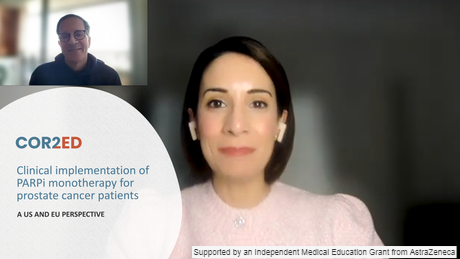


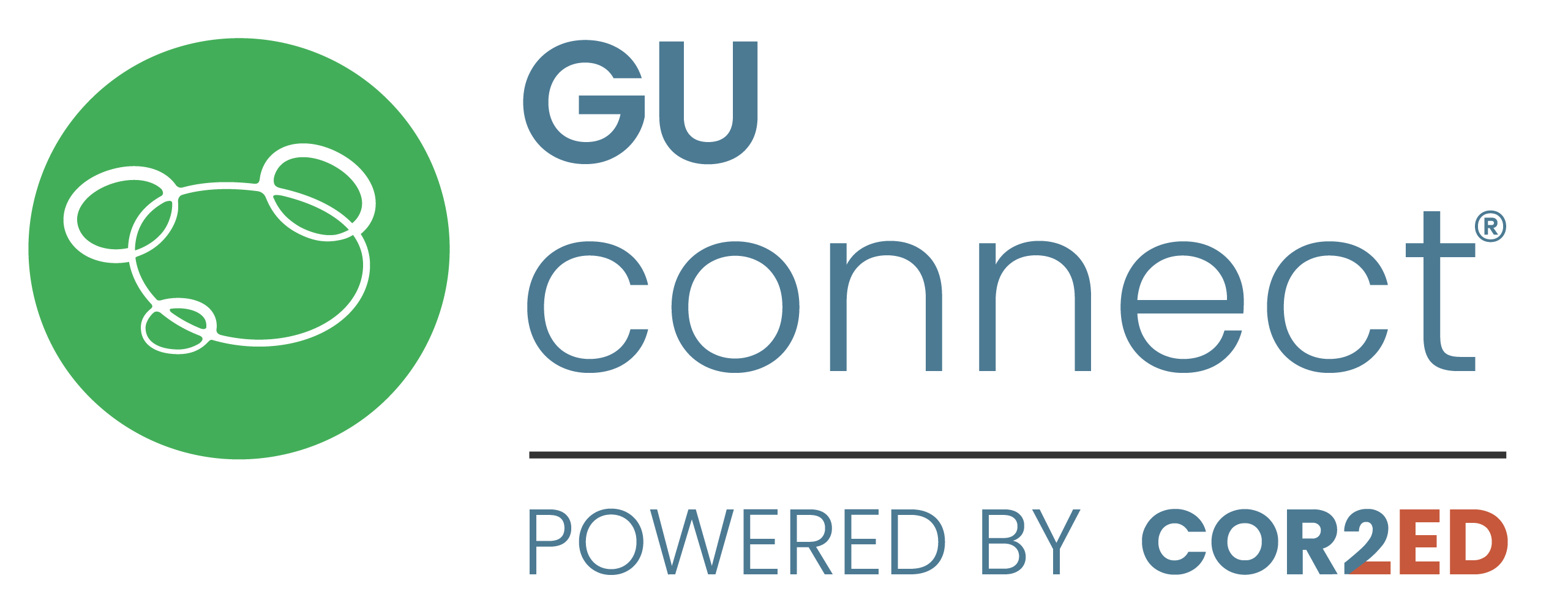



 5 MIN
5 MIN
 Dec 2025
Dec 2025 
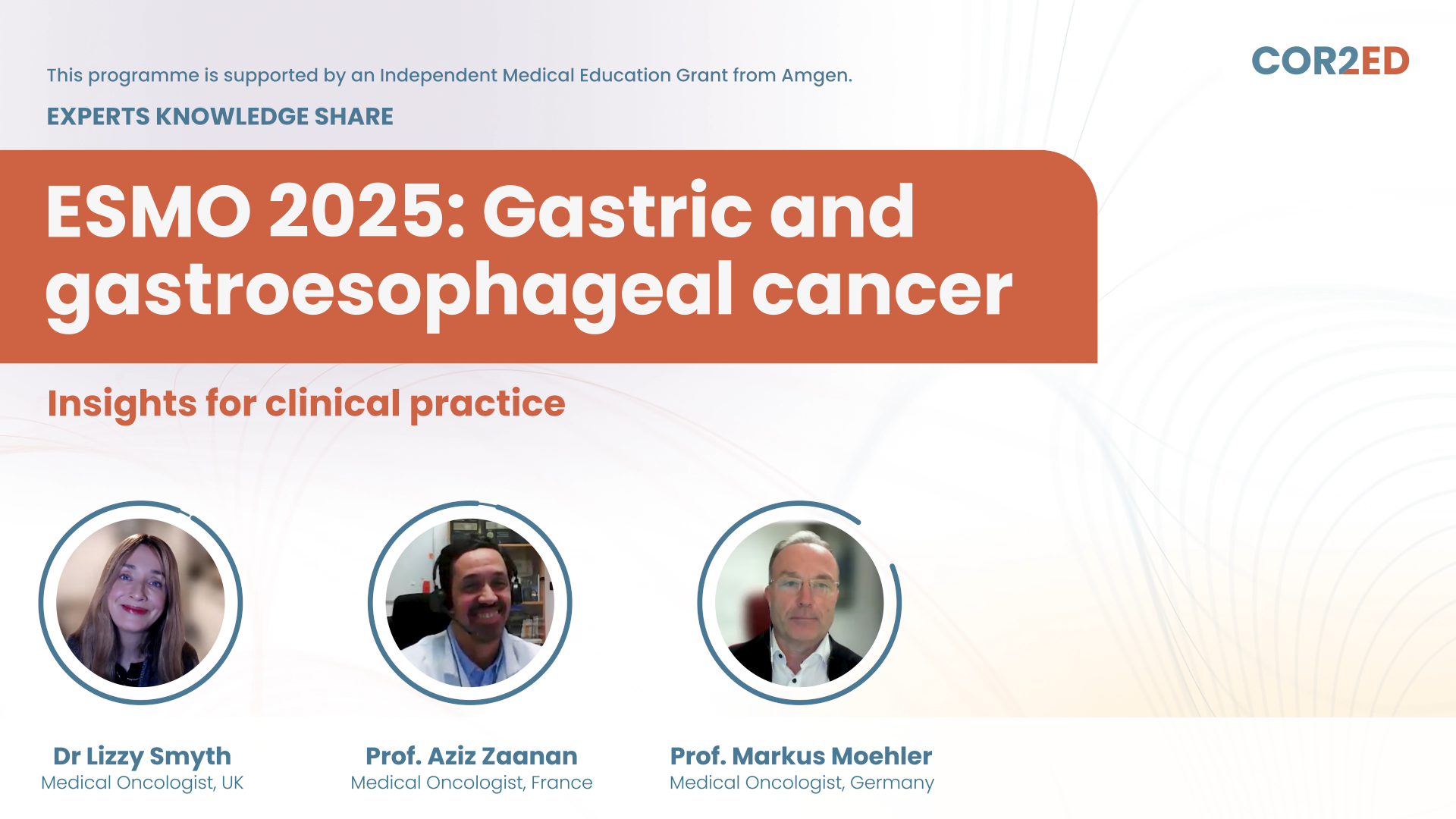

 Downloadable
Downloadable 